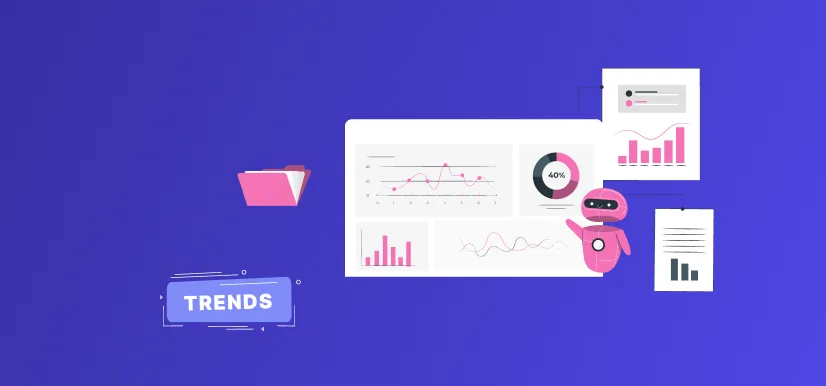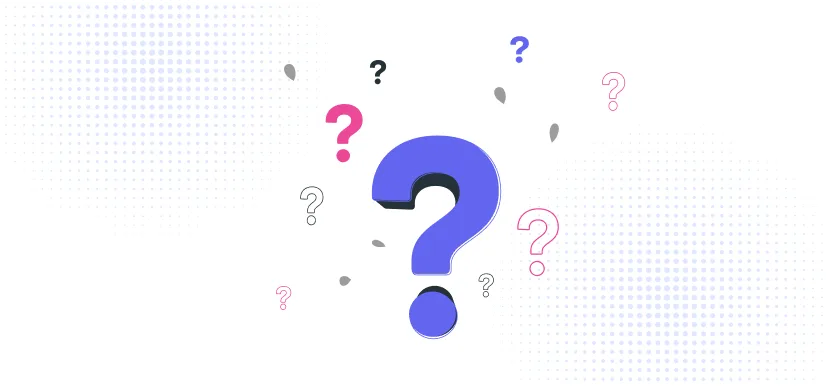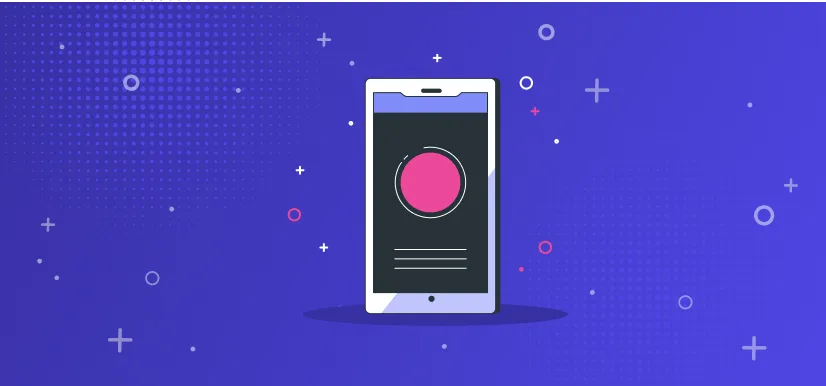- Data,
- Personalization
Top Data Trends for 2024: The Rise of First-Party and Zero-Party Data


Data is a commodity.
In fact, it's one of the most important facets of any business.
Data collection has become easier than ever before with the enhancements in technology, but it's also led to an increase in privacy risks that can make or break your business model.
Data is used to make decisions and help companies reach their goals—but how data will be collected in 2024 is drastically different from how it was collected before.
The rising importance of first-party and zero-party data has changed the way we collect information, which means that now more than ever, data needs to be handled with care.
But, why?
With more and more people becoming aware of how much data they're giving up to companies every day, customers are starting to become concerned about what happens with that information once it's collected.
As enforcement becomes stricter on governing regulations and laws like the GDPR, the way you collect data matters more than ever.
1. Data Types
1.1. Zero-Party Data
1.1.1. What Is Zero-Party Data?
The information that a customer freely provides to a company is referred to as zero-party data.
It is not inferred from a customer's behavior on your website. It is explicitly provided by a customer, usually with the expectation that providing their data will result in a better experience.
Since zero-party data is obtained from a user with their consent and is not from any inference, it is privacy-first.
Moreover, collecting this data does not violate the user's privacy, and it doesn't have the creep factor of third-party data or information inferred from what they do.
This type of data is so valuable because it's not biased.
It can be used to accurately target a customer segment with content that they will enjoy and want more of, without guessing or using other types of first-party and third-party data which may have biases.
1.1.2. How Is Zero-Party Data Collected?
The lack of established tools or out-of-the-box solutions for gathering and utilizing zero-party data is one of the challenges that marketers face.
The lack of established tools or out-of-the-box solutions for gathering and utilizing zero-party data is one of the challenges that marketers face.
However, there are still a variety of methods zero-party data can be collected that are both legal and ethical.
The following are some examples of zero-party data sources that can be used for marketing activities, decision-making procedures, personalization, etc.:
1.1.2.1. Forms
Forms are an excellent starting point for collecting zero-party data because they enable marketers to capture user traits and personalize the experience based on that information, such as displaying relevant content based on the completed form.
1.1.2.2. Chatbots
Chatbots are a smart evolution of forms that are extremely powerful in capturing the visitor's intent and personalizing the content based on the intent. Natural interaction with chatbots makes it much easier to ask for different intents and narrow down the customer profile.
1.1.2.3. Intent Surveys
Intent surveys are another popular means of capturing the customer intent while personalizing.
For example, suppose the visitor is looking for information on a new product, and they answer "yes" to certain questions such as whether or not they want more information about that product. In that case, their experience can be tailored with personalized content related to their interests.
1.1.2.4. Self Segmentation
As the name implies, self-segmentation involves asking your customers to tell you which audience segment they belong to. This is a very effective strategy for personalizing the buying experience for personas.
Self-segmentation can be as simple as asking visitors whether they are home owners, renters, or looking for a new property so that they receive relevant information.
1.1.2.5. Quizzes
Quizzes are a great way to boost engagement and capture zero-party data.
Quizzing customers about their preferences and then tailoring content or offers to match specific needs significantly boosts conversion rates. Also, the ability to use gamification strategies makes quizzes so interesting.
1.2. First-Party Data
1.2.1. What Is First-Party Data?
First-party data is information about a customer collected directly by a company through its own channels and sources.
There are two types of first-party data: customer data and user data.
Customer data is information an organization has about its customers, such as demographic details or purchase history.
User data is gathered from a person's interaction with the company's website, app, etc., including browsing habits, events, or content preferences.
First-party data is valuable and compelling because it is data that a company has directly collected in its own channels and sources. It is a company's own data that they do not have to purchase or trade with third parties, as the customer has already given it freely through their interactions with the business.
However, first-party data also carries privacy concerns when collected without the explicit permission of the user. Companies are legally required to get customer consent before collecting their personal information, but those limitations depend on country regulations like GDPR and CCPA.
1.2.2. How Is First-Party Data Collected?
To collect first-party data, you need to add a pixel to your website or social media profiles that collect and record user information such as behaviors and actions.
A pixel can collect data whenever a visitor lands on or clicks on your website, looks at your items, interacts with a social media post, or fills out a survey.
1.3. Second-Party Data
1.3.1. What Is Second-Party Data?
According to HubSpot, second-party data is information that you didn't collect yourself - in other words, you're using it secondhand. It's sometimes used between trusted partners who come to an agreement to share audience insights if it would be mutually beneficial to both businesses.
Basically, second-party data is some other organization's first-party data.
You have to have direct contact with the organization that collected the data in order to purchase second-party data. This varies from the process of buying third-party data, which involves working with a data aggregator. The buyer and seller connect, agree on conditions, and then trade data in a second-party data transaction. This arrangement gives you more transaction flexibility, ensures that you acquire high-quality data, and allows you to develop partnerships with other businesses.
1.3.2. How Is Second-Party Data Collected?
Because second-party data is basically the same as first-party data, receiving it from someone else is the only way to access it.
As previously said, the easiest approach to accomplish this is to form a partnership with another group that shares your interests. Because your goals are so similar, sharing data will only help you enhance your customer service and marketing activities.
1.4. Third-Party Data
1.4.1. What Is Third-Party Data?
Third-party data is information that has been collected from multiple sources, aggregated into a single dataset, packaged, and sold.
Companies that sell third-party data are not always the same companies that gathered the data in the first place. Instead, they acquire first-party data from a variety of other companies and package it for sale. This type of data allows marketers the ability to create more targeted ads for their audience because they are able to use specific details about them.
Third-party data has come under criticism in the last years, and as a result, Apple and Google have both taken steps against third-party data, with Apple blocking third-party cookies and Google removing the support of third-party cookies from Chrome. On the other hand, the usage of AdBlockers has increased in the last few years, making it more difficult for marketers to collect data and aggregate third-party data.
This is a significant challenge for marketers because they cannot rely on this type of data, which results in less targeted ads and potentially lower conversion rates.
1.4.2. How Is Third-Party Data Collected?
Third-party data is acquired and transmitted in the same manner as first-party and second-party data.
To acquire information about a wide audience, independent researchers employ surveys, interviews, and feedback forms. Organizations can then acquire this data for their own use, just as second-party data.
The difference between third-party data and first-party & second-party is that the majority of third-party research is done with random sample sizes.
Unlike the other two types of data, which are gathered from your customers, third-party data is gathered from anyone who is willing to fill out a survey. While this increases the number of participants and responses, it's difficult to predict whether the data will be valuable to your company.
2. The Rise of Zero-Party Data
A growing number of consumers are concerned about the security and privacy of their personal data.
They're also becoming increasingly wary of third-party data, as they don't have control over how it's used or who has access to it.
These factors create a perfect storm for marketers to use zero-party data to serve customers better and grow their business.
Customers are eager to share personal information with businesses in exchange for an experience tailored to their preferences. Customers want individualized content, but they also want to choose what information is shared in order to get that personalized experience with a brand.
Leveraging zero-party data also eliminates the "creepy element" that customers often feel when interacting with a company.
3. How to Use Zero-Party and First-Party Data for Personalization?
In the age of decreased consumer trust and increased regulations on data collection, marketers have an opportunity to improve the customer experience by leveraging their own zero-party and first-party data.
First-party data from analytics tools such as Google Analytics can be used to analyze customer behavior, but it can also be used for other optimization strategies such as personalization. The Ninetailed Platform, for example, can improve the customer experience through personalization based on first-party behavior data with no additional implementations, as the platform analyzes user behavior and serves relevant content based on browsing intent signals.
Personalizations can also be enabled using first-party data obtained from sources other than the website. Companies with customer-centric products and services, such as banks or telecoms, could use their CRM or CDP to personalize the user experience by using first-party data from other applications, such as mobile banking or call center logs.
Zero-party data, on the other hand, may be thought of as personalization on steroids, as it has the potential to leverage first-party data and personalize marketing activities based on customer preferences. Zero-party data is so effective because the user itself is the source of personal information, which is likely to be more accurate than other sources.
4. Future-Proof Data for Personalization
Capturing consumer motivations, intentions, interests, and preferences at scale enable organizations to personalize each customer's experience, removing guesswork and providing the data required to make the right connections with customers.
Third-party data has been a critical component of marketing data strategy in recent years, but as consumers become more aware of the privacy concerns associated with third-party data, marketers will be forced to rely on first-party and zero-party data.
So, the rise of first-party data and zero-party data is the new frontier for personalization.
Some companies are already positioning themselves to take advantage of this new opportunity. For example, a large US retailer recently announced its intention to become the ultimate first-party data company.
Finally, our personalization API simplifies the collection and use of first-party and zero-party data. Contact us to learn more about implementing a zero-party data strategy and personalizing your customer experience with Ninetailed Personalization.
Learn how to deliver unique and personalized customer experiences to increase conversions

